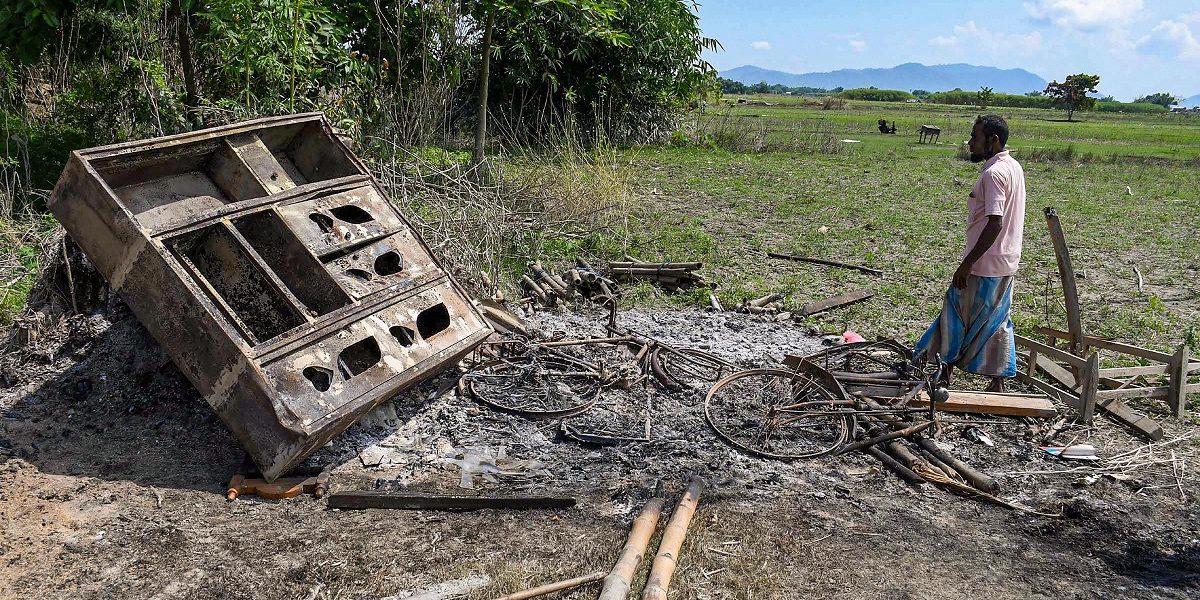
Image: PTI
Allow me to say that there is a prevailing confusion in the metropolitan press about the ethnic situation in Assam. Assamese chauvinists compound it with their folly, and Bengali chauvinists do the same with their closed minds.
Is there such a thing as indigeneity relevant to Assam? I dare say there is. The indigenes of Assam are descendants of the inhabitants of old Assam, and that part of Barak Valley ruled by Cacharee kings before the British occupied and integrated the region with the rest of India. Assam was never a part of
the different Indian empires, from the Mauryan and the Gupta empires down to the Mughal empire. Like Nepal its culture formed part of the broad and variegated Indian culture, but socially and politically it had a different identity.
Civil war, Burmese occupation for over two decades, and epidemics had depleted native population and the new colonial rulers allowed a huge influx of population from other parts of India to use this new acquisition to their profit. Migration was necessary to restore the economy and some sort of order. But the British were not benevolent guests. Under British patronage, migrant, by and large, forged ahead of natives, particularly owing to their better acquaintance with modern ideas and skills. But it is quite obvious that the advantage had been a product of colonial management and by no means fair competition on a level playing field.
Modern education and the freedom movement to some extent narrowed the gap, but the unease remained. Following independence, owing to belated development and benign neglect by the central government the gap remained, as well as the sense of deprivation. Assamese chauvinism arose out of this stagnation and disempowerment, and was fuelled by patronage of different governments in Delhi. This is a dangerous shortcut, and has been used with cunning by different pan-Indian parties.
But that does not mean that the natives have been the oppressors and migrants the victims. Enlightened, democratic sections of Assam have NOT cheered on gunning down of alleged encroachers, and the BJP is today posing as the saviour of the native Assamese and stoking communal chauvinism.
The char areas or large sandbanks, some more stable than the rest, appear on various parts of the Brahmaputra, a far bigger and more turbulent river than the Ganga, and in olden days native Assamese used to grow Ravi crops there in winter. Since the great earthquake of 1950 it has become even more
turbulent and wayward. Immigrant Muslim population was originally confined to Western Assam, but in the last few decades frequent erosions and wholesale disappearance of numerous villages in the swelling rivers have forced immigrant Muslims to come upstream and settle in chars that were left unoccupied and uncultivated in winter.
This has caused simmering anger and heart-burning among people of native origin. It is also an unmistakable reality that there are lakhs of poor landless people among native Assamese too. BJP has predictably used this opportunity to turn the embers into a blaze.
Consider for a moment what was the crying necessity to evict thousands of families settled in some chars for forty to fifty years in military-type operations?
Their ringing calls are first, “free Assam’s land from foreigners” for home consumption, and “develop the land for modern agriculture”, in a disguised campaign to make hundreds of acres of land available for Indian corporates eager to poach on such land these days.
So, the ruckus about Bengali and Muslim victims of Assamese xenophobia had better be put in clearer perspective rather than clench one’s teeth and foam in the mouth against phantom enemies. Assamese chauvinism is only a bit-player in this Armageddon.
Post script:
People who do not know the history of this region had better digest one genuine historical fact. No one in his senses can deny the secular credentials of the Communist Party of India. The Assam provincial committee of the All India Krishak Sabha, an organisation under CPI influence which had both Assamese and Bengali members, shared the indigenous people’s anxiety at the unprecedented and enormous influx of Muslim peasants from Eastern Bengal to Assam as planned and promoted by the British colonial government and the stridently communal Muslim League, and passed a resolution in its open session at the provincial conference in 1945 expressing deep concern at it.
It shows that this influx which drastically altered the population pattern of the province in just two decades and planted the seed of long-standing division and conflict had been no figment of frenzied Assamese imagination. The challenge today is to redirect the people’s ideas and energies towards peaceful reconciliation and unity.
*The author is a highly respected Assamese intellectual, a literary critic and social-scientist from Assam. Views expressed are the author’s own.
Other pieces by Dr. Hiren Gohain:
Atrocity as Mode of Governance
The Spectre of Opposition Unity
The riddle of ‘Elected Autocracy’
